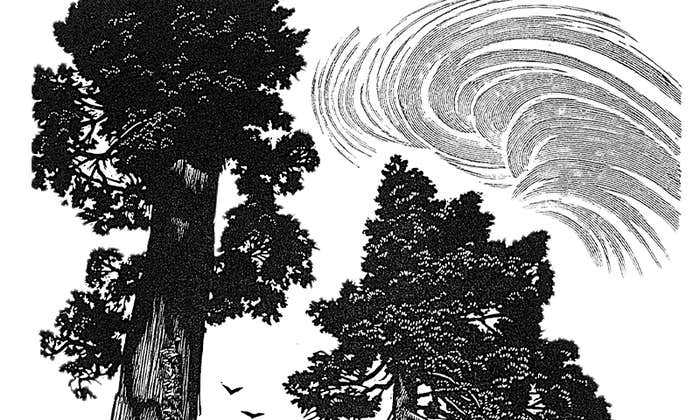Our sizzling sun hosts plenty of fiery commotion. The star’s interior contains swirling, electrically charged gas called plasma. All this hubbub sparks intense magnetic fields. When the flowing plasma tangles magnetic field lines, it can prevent heat from rising to the surface, which creates freckles on the sun, known to scientists as sunspots. These spots are darker and chillier than the rest of the star’s surface, typically around a cool 6,000 degrees Fahrenheit compared with the average 10,000 degrees Fahrenheit.
The number of sunspots varies throughout the sun’s solar cycle: Every 11 years, the sun’s magnetic field reverses and sets the super-active star back toward a minimum in activity. Astronomers keep tabs on sunspots to gauge where the sun is in this cycle—at the height of solar activity, they will see the most freckles. A reversal of the magnetic field is a major event, which can provoke stormy space weather and interfere with communications systems on Earth.
But most telescopes struggle to capture these spots with just the right amount of detail and scope. The heftiest and most powerful solar telescopes can make visible the most minute details on the sun’s surface, but they tend to have a narrow field of view, so they miss the bigger picture. Meanwhile, smaller, less powerful telescopes can often observe the entire visible sun, but they can’t magnify the nitty-gritty on the star’s surface, including sunspots and moving plasma.

Enter the Vacuum Tower Telescope on the Spanish island of Tenerife, off the coast of West Africa. As seen in this image, the telescope has both a wide field of view and sharp spatial resolution—closing the solar telescope gap. Thanks to a shiny new camera system from the Leibniz Institute for Astrophysics Potsdam in Germany, the telescope delivers unprecedentedly clear images of the sun. Using this system, researchers could theoretically glimpse the details of a coin in one’s hand from more than a mile away, says astrophysicist Carsten Denker from the Leibniz Institute for Astrophysics Potsdam, in an email.
The Vacuum Tower Telescope can now also capture wide swaths of the sun at once, around 124,000 miles in diameter, compared to an average for most large telescopes of about 46,000 miles in diameter. Using special filters, the Vacuum Tower Telescope can capture even the most minuscule traces of magnetic fields, which show up as vibrant structures. “We are teaching an old telescope new tricks,” said Carsten Denker, head of the Solar Physics Section at the Leibniz Institute for Astrophysics Potsdam, in a statement. ![]()
Lead image: A high-resolution image reconstructed from 100 solar images captured by the new advanced camera system. The details are much sharper than most telescope snapshots. The image section corresponds to about 124,000 miles across the solar surface. Image from R. Kamlah et al. 2025.






























